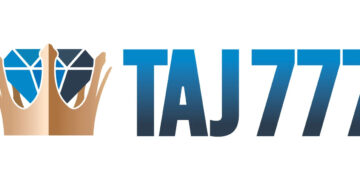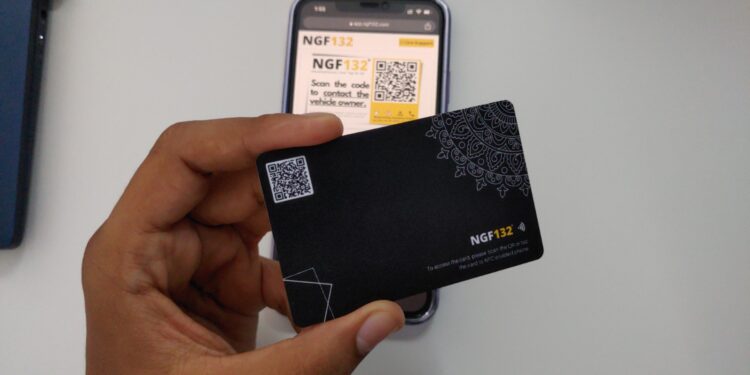Business cards are still useful but the way we use them has changed. In Singapore’s fast-moving business scene, printed cards can’t keep up. They get lost, go out of date and take time to reprint. That’s where digital business cards come in.
These cards live on your phone or computer. You can share them in seconds, update them any time, and add extra features that printed cards can’t match.
Whether you’re a freelancer, startup founder, or business owner, a smart card helps you connect better and work smarter. In this guide, you will learn about the top features every Singapore entrepreneur should look for.
What Is a Digital Business Card?
A digital business card is the new way to share who you are. It holds your contact details online, and you can send them with a quick tap, link, or code. You don’t have to print or carry piles of paper cards anymore.
You can fix your card anytime, so no one gets old details. For Singapore entrepreneurs, this changes the game. It fits the busy, phone-loving work style here.
Whether you meet at a café, join a call, or greet someone at an event, you can flash your card in seconds. It stays neat, fresh, and always ready.
Why Should You Use One?
Paper cards often hide in drawers or land in bins. A smart business card cuts that problem. It keeps you set to share anytime, anywhere. You can send it through text, email, or a quick tap—no waste or reprints.
In Singapore, where people live digital lives, this fits like a glove. You shape how others see your contact details and choose how to share them.
It also shows your brand with pride, giving each card a touch of you. With this one shift, you lead the way, save time, and turn every chat into a real connection.
Essential Digital Business Card Features for Entrepreneurs in Singapore
1. Custom Look and Feel
Your card should reflect your brand. When someone sees it, they should remember you. Choose colours, fonts, and layout that match your company’s style. Add your logo and use your business tone of voice. These small details build trust and show you take your work seriously.
In Singapore’s crowded market, standing out is key. A strong design gives the right impression right away. Make sure your card feels personal and polished not like a copy of someone else’s.
This isn’t just about design as it’s about showing that you care about your image and the experience of the person receiving it.
2. Complete Contact Details
Don’t stop at your phone number. A good digital business card includes all the ways people might contact you. Add your email, company website, LinkedIn, and office address. You might also include links to WhatsApp or other platforms you use often.
The goal is to make it easy for someone to reach you in a way that suits them. In a place like Singapore, where people use many channels for work, this matters.
Don’t make people search for your contact details—put everything in one spot. Clear and full contact information builds trust and makes follow-ups smoother.
3. Simple Sharing Options
You should be able to share your smart card without any fuss. Whether you’re in a meeting or bump into someone at a café, sending your card should take seconds.
The best cards offer a few ways to do this like QR codes, tap, or a simple link. This removes the need for printed cards and avoids awkward moments when you run out.
In Singapore, where people are always on the go, easy sharing saves time and effort. Make sure your card works across all devices and platforms, so it’s ready whenever you are, no matter the situation.
4. Quick Updates
Your job title, phone number, or website might change over time. With a printed card, you’d need to throw old ones away and get new ones made. A digital card lets you fix these changes in seconds. No waste, no delay.
This matters for entrepreneurs in Singapore who often grow their businesses fast. Your contacts always see the latest version, which keeps you looking sharp and current.
You don’t risk losing touch just because someone tried calling your old number. With quick updates, you stay in control of how you present yourself at all times.
5. Add Media to Tell Your Story
Sometimes words alone don’t do enough. A strong digital business card gives you space to show what you do. You can add a short video to introduce yourself or a brochure that shows your product or service.
If you have good client feedback, you can even include that. This turns your card into a mini-presentation. People can view your work before speaking to you.
In Singapore’s fast business world, that saves time and gets interest quickly. Media helps you stand out, explain your value, and show you’re ready to impress not just hand over contact details.
6. Clear Action Buttons
Every smart business card should push the next step. Don’t just stop at your name and number—give people something to do. Use clear buttons like “Book a Call”, “Visit Website”, or “Send a Message”. This shows you’re open and ready to talk.
It also saves your contact from searching through other apps or websites to reach you. Good action buttons help convert casual chats into real meetings.
In Singapore’s business scene, where time is short and competition is high, small things like this can make a big difference. Be clear, direct, and easy to reach.
7. Know When Someone Views It
Some digital cards let you know when someone views your card or clicks on your links. This helps you decide when to follow up.
You don’t have to guess if they’re interested. If someone checks your card again after a few days, that could be the right time to get in touch. It’s about timing your contact right, not being pushy.
In Singapore, where business moves fast, a well-timed message could turn into your next deal. Knowing who’s active helps you focus your time and energy on the right people without guessing or chasing dead leads.
8. Safe and Private
Protecting your contact details and your contacts privacy is important. In Singapore, laws like the PDPA guide how you share and store personal data. Your smart card should let you control who sees what. You should be able to update, hide, or delete info when needed. This gives you peace of mind and builds trust with the people you meet.
No one wants their number or email shared without permission. Choose a format that puts you in control. It’s your information—you should be able to manage it easily, safely, and in line with local rules.
9. Works With Other Tools
A good business card fits into your daily work. You shouldn’t need to copy and paste contact info or jump between apps. Your card should connect to tools you already use, like your calendar or contact list.
When someone taps on “Book a Meeting”, it should open your booking page. If they save your card, it should go right into their contacts. This saves time and cuts down on errors.
For entrepreneurs in Singapore, handling lots of meetings, quick and smooth systems matter. The more your card can do behind the scenes, the better it works for you.
10. Offline Access
Sometimes, you can’t count on a strong connection. Maybe you’re in a lift, an underground carpark, or flying out for a meeting. A strong business card should still work when you’re offline.
It might be stored in your phone or loaded from memory. Either way, you can still share your contact info when needed. In business, timing is everything.
You don’t want to miss a chance just because of a weak signal. This feature might seem small, but it’s key. It means you’re always ready no matter where you are or what the connection looks like.
Final Thoughts
A digital business card is more than just a new way to share contact details. It’s a tool that helps you work smarter, not harder. It keeps you ready to connect, follow up, and grow your network.
In Singapore’s fast-paced, digital-first world, this matters. Focus on cards that match your brand, support full contact sharing, and help people take the next step.
Look for safety, updates, media options, and tool integration. Use a smart business card that works for you. The right features save time, show off your work, and help you turn contacts into real business.


















